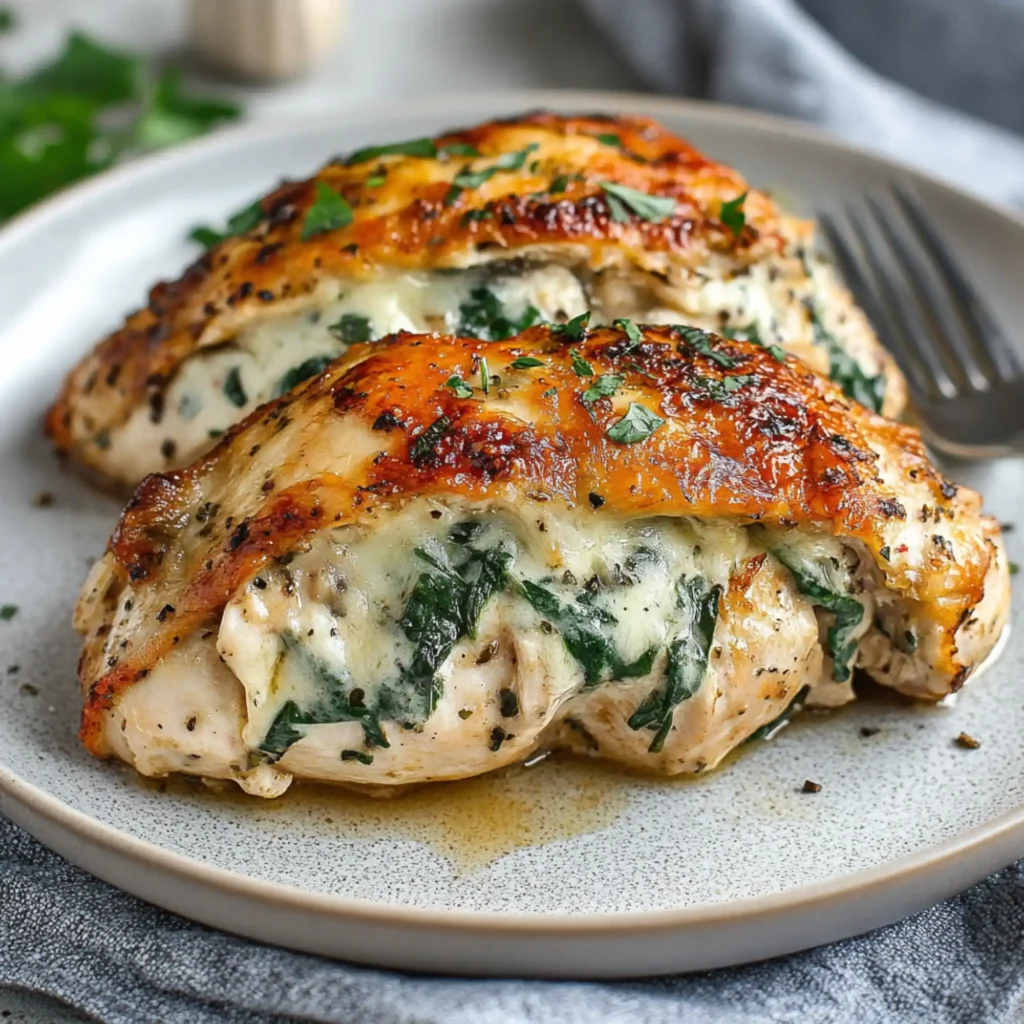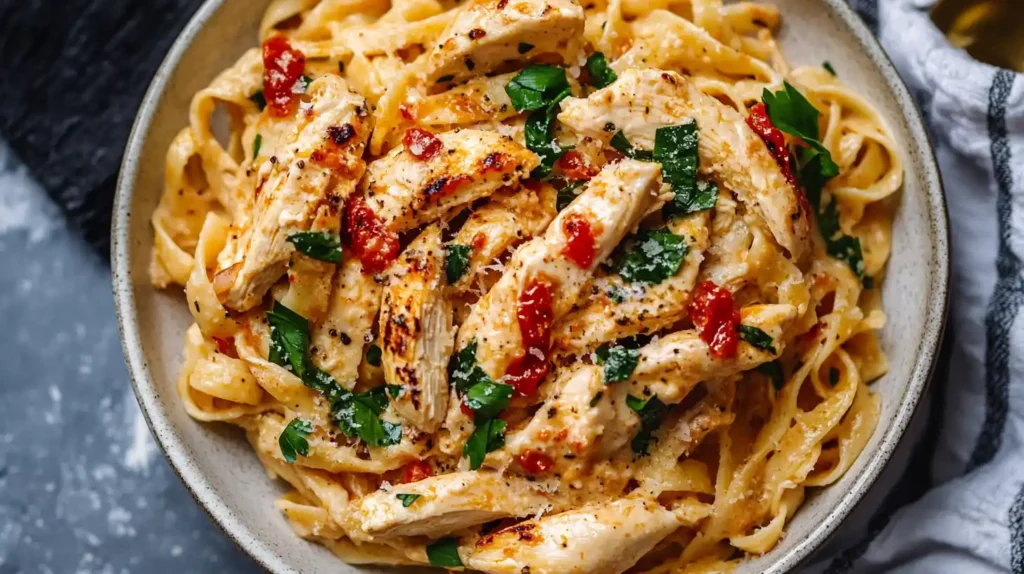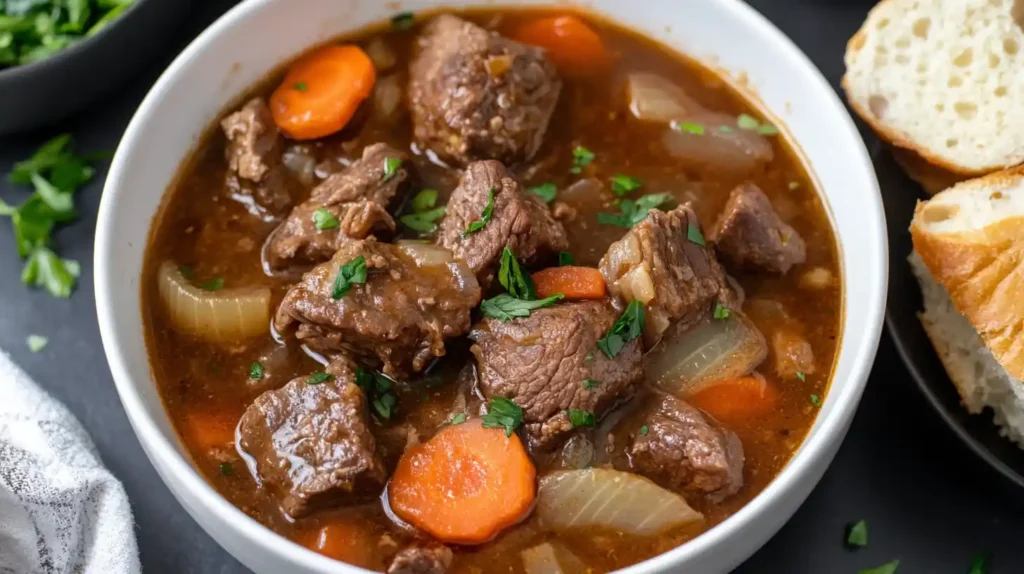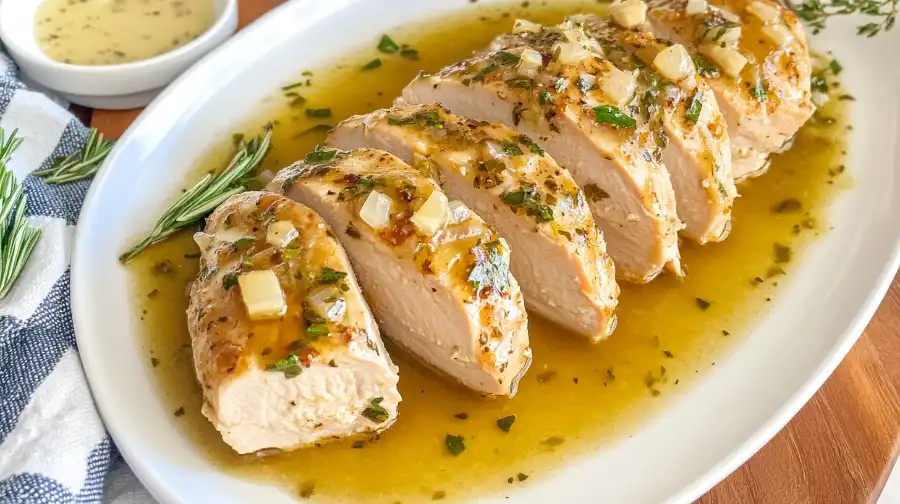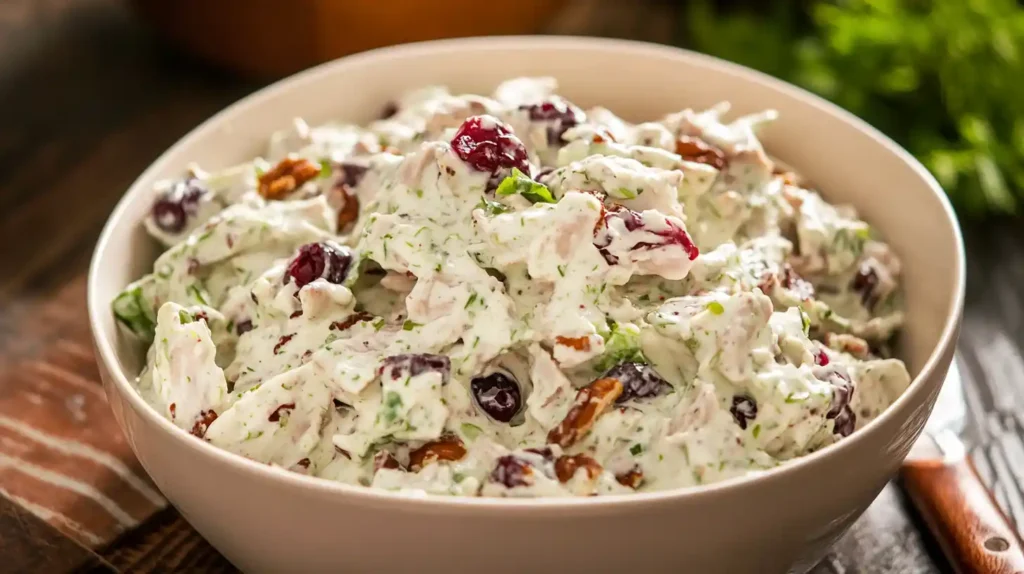Learning to make cold smoked salmon at home turns your kitchen into a gourmet workshop. This guide will walk you through every step to get restaurant-quality results. You won’t need any complex tools.
Smoking fish yourself boosts flavor and freshness, beating what you can buy in stores. It’s a game-changer for your taste buds.
Whether you’re a cooking enthusiast or a home chef, this cold smoked salmon recipe makes it easy. You’ll learn the basics, from picking the right fish to mastering the smoking process. Your creation will taste and feel just like professional smoked salmon.
What Is Cold Smoked Salmon and Why Make It at Home
Cold smoked salmon is a classic dish known for its smooth texture and subtle smoky flavor. To start making how to make cold smoked salmon, you need to know its unique process. Unlike hot smoking, cold smoking uses low temperatures to add flavor without cooking the fish fully.
This method keeps the salmon moist, making it perfect for raw dishes like lox or gravlax.
The Difference Between Cold and Hot Smoking
Cold smoking vs. hot smoking is important. Here’s why:
- Cold smoking: Temperatures stay below 85°F (29°C), smoking the fish for 12–24 hours. The fish stays raw, requiring prior curing.
- Hot smoking: Reaches 140°F–170°F (60°C–77°C), cooking the fish fully. Results in a firmer texture, like smoked trout.
Benefits of Making Your Own Cold Smoked Salmon
Making it at home gives you full control. You can pick wild-caught salmon and avoid additives. You can also try different wood chips like alder or apple.
Homemade salmon is often half the price of store-bought. Plus, you learn skills that work for other smoked foods, like trout or cheese.
Traditional vs. Modern Smoking Techniques
Old methods used wood-fired smokehouses, needing days and careful watching. Modern home setups make it easier. Electric smokers like Weber SmokeFire or Masterbuilt control temperature easily, while pellet grills manage wood chips automatically.
These tools save time without sacrificing quality.
Essential Equipment for Your Cold Smoked Salmon Recipe
Mastering the cold smoke salmon recipe starts with the right tools. Each piece of equipment is key to getting that smoky flavor and texture. Let’s look at what you need to set up your home setup.
Smokers and Smoking Setups for Home Use
Choose a smoker made for cold smoking, which needs low temperatures (80°F or below). Popular choices include:
- Weber Smokey Mountain: Versatile and affordable for beginners.
- DIY setups using standard grills paired with smoke generators.
- Electric smokers like the Weber Summit for precise control.
Temperature Control Devices
Keeping temperatures stable is key. Use:
- Digital thermometers with remote sensors for real-time monitoring.
- Programmable controllers like the Thermoworks Thermapen to adjust heat sources gradually.
Wood Chip Selection and Why It Matters
Wood choice affects flavor. Choose mild, hardwood chips like alder or apple for subtle notes. Avoid strong woods like hickory, which can overpower the salmon’s taste. Soak chips in water before use to extend smoke time.
Additional Tools You’ll Need
Prepare these essentials:
- Sharp fillet knives for precise cutting.
- Food-grade plastic containers for curing.
- A kitchen scale to measure curing salt accurately.
- Food-safe gloves to prevent cross-contamination.
With this equipment, you’ll ensure every step of your cold smoke salmon recipe goes smoothly, from setup to final preparation.
Selecting the Perfect Salmon for Cold Smoking
Finding the right salmon is key for cold smoked salmon that tastes great and is safe to eat. The quality of the fish makes a big difference. Choose from cold smoked salmon types like King (buttery), Sockeye (rich red flesh), or Coho (mild flavor).
Farmed Atlantic salmon is cheaper but tastes milder than wild-caught salmon.
- Wild vs. Farmed: Wild salmon has a firmer texture and more complex flavors. Farmed salmon is easier to find but less varied.
- Freshness Check: Look for fish that glistens, has clear eyes, and feels firm. Stay away from fish with a strong smell.
- Thickness Matters: Fillets that are 1–1.5 inches thick smoke evenly. Thicker pieces might not cure well, while thinner ones can dry out.
Freezing salmon at 0°F for 7 days before smoking is essential for food safety. Choose center-cut fillets for the best flavor. Look for labels that say “sushi-grade” or “sashimi-grade” for top quality. For beginners, start with 2–3 pounds of salmon. Remember, fresh salmon is more important than saving money; bad salmon can ruin your cold smoked salmon dish.
Preparation Steps: From Fresh Fish to Ready-to-Smoke
Getting your salmon ready for cold smoking is key. Follow these three steps to make sure your fish is perfect for smoking.
Proper Salmon Cleaning Techniques
Cleanliness is the first step. Here’s how to get your fillets ready:
- Scale removal: Scrape skin-side with a fish scaler or dull knife from tail to head.
- Pin bone removal: Feel along flesh for hard spots, then pluck bones with needle-nose pliers.
- Trim excess: Cut away dark edges and uneven parts to leave only the best flesh.
The Crucial Curing Process
Curing keeps your salmon fresh and flavorful. You can choose between:
- Wet brine: Mix ½ cup kosher salt, ¼ cup brown sugar, and 2 cups water. Soak fillets 12 hours in the fridge.
- Dry cure: Combine ½ cup salt, ¼ cup sugar, and spices like peppercorns or dill. Rub mixture into flesh, cover, and cure 12–24 hours.
Check if the fillet is firm but not rubbery to see if it’s ready.
Developing Pellicle: The Secret to Perfect Smoke Adhesion
This sticky surface forms when cured salmon meets air. Here’s how to do it:
- Place fillets skin-side down on a wire rack over a plate.
- Chill uncovered in the refrigerator (38–40°F) for 2–4 hours.
- Check for a sticky feel – this layer ensures smoke clings evenly during smoking.
Keep the fridge door ajar or use a fan on low to maintain airflow. Avoid humidity to speed up the process.
The Complete Cold Smoked Salmon Recipe: Step-by-Step Guide
Learn to make cold smoked salmon with this easy guide. Follow each step to get rich flavor and the right texture.
Setting Up Your Smoker Correctly
First, set up your smoker as the manual says. Soak wood chips in water for 30 minutes. Alder or oak is best.
Put a rack inside to hold the salmon off the heat. Keep vents open for airflow. Place the salmon skin-side down for even smoke.
Temperature and Timing Guidelines
Keep the smoker at 65–85°F (18–29°C) with a thermostat. Cold smoking takes 12–48 hours. Check the fish every 4 hours.
After 12 hours, the surface should feel tacky. At 24 hours, it will firm up. By 48 hours, it will have full flavor. Taste a small piece to decide when it’s ready.
Monitoring the Process
Check the smoker twice a day. Replace wood chips every 2–3 hours for smoke. Look for a thin pellicle on the salmon’s surface.
Check the fish’s weight often. It should lose 15–20% of its original weight when done.
Troubleshooting Common Problems
- Temperature dips? Make sure the smoker is sealed well. Add insulation like blankets if it’s cold outside.
- Weak smoke? Soak wood chips longer and check airflow. Use a smoke generator for stronger flavor.
- Uneven drying? Rotate the fish halfway through smoking to balance exposure.
Fix problems right away to avoid spoilage. Being patient and careful is key to make cold smoked salmon safely and well.
Storing and Serving Your Homemade Cold Smoked Salmon
After making your cold smoked salmon recipe, it’s important to store it right. Let it sit at room temperature for 1–2 hours to blend flavors. Then, refrigerate it within 2 hours of smoking.
For the best taste:
- Keep it in vacuum-sealed bags or airtight containers with parchment paper. It stays fresh for 1–2 weeks at 32–38°F (0–3°C).
- Freeze it for up to 3 months in heavy-duty freezer bags. Remove air and lay flat to keep texture.
- Use food-grade plastic wrap or butcher paper to cover the salmon. This stops oxidation and keeps flavors good.
Here are some ways to serve it:
- Put it on charcuterie platters with dill, crème fraîche, and toasted bagels.
- Place thin slices on avocado toast or mix into pasta like lox linguine.
- Enjoy it with red onions, capers, lemon wedges, and chives.
Cut it into 1/8-inch slices for canapés or ¼-inch strips for salads. Use a sharp knife, cutting against the grain. Discard leftovers after 7 days in the fridge or 3 months in the freezer. Keep it fresh to enjoy the delicate texture of this cold smoked salmon recipe.
Conclusion: Enjoying Your Perfectly Cold Smoked Salmon
Learning to make cold smoked salmon opens up a world of flavors. Each batch you make helps you get better at it. Your homemade salmon will taste much better than store-bought.
Start with the steps in this guide. With each try, you’ll get more confident.
Keep track of your progress in a smoking journal. Note down cure times, wood types, and temperature changes. This helps you find what works best, like using hickory or applewood chips, or adding dill or citrus zest.
Small changes can make a big difference in taste.
Sharing your salmon with others is the best part. Slice it thin for appetizers, put it on bagels, or serve it with cream cheese and herbs. Your hard work will impress everyone, making it a favorite dish.
But remember, these skills aren’t just for salmon. You can smoke cheese, nuts, or even trout. Cold smoking is a skill that takes patience and precision. With practice, your kitchen will become a place of creativity, making dishes that are as good as the pros. Now’s the time to start your smoker and begin your journey.
FAQ
What is cold smoked salmon?
Cold smoked salmon is made by curing and then smoking salmon at low temperatures. This method gives it a unique flavor and texture. It’s different from hot smoked salmon.
How do I make cold smoked salmon at home?
To make cold smoked salmon at home, you need fresh salmon, curing ingredients, and a smoker. First, clean the fish and cure it. Then, develop a pellicle and smoke the salmon.
What equipment do I need for a cold smoked salmon recipe?
You’ll need a smoker, thermometers, wood chips, and tools like scales and knives. These help in the smoking process.
What are the best types of salmon for cold smoking?
King, Sockeye, Coho, and Atlantic salmon are best for cold smoking. King salmon is known for its rich flavor.
Why is proper curing important for cold smoking salmon?
Proper curing removes moisture and enhances flavor. It’s key for a great taste. Use the right salt and sugar ratios.
How do I know when the pellicle has formed?
The pellicle forms when the salmon is cool and dry. It feels sticky to the touch. It usually takes 2-4 hours.
How long should I cold smoke salmon?
Smoking time varies from 12 to 48 hours. Keep an eye on temperature and salmon’s progress.
How should I store my homemade cold smoked salmon?
Store it in the fridge for 1-2 weeks. Freeze it for up to 3 months to keep it longer. Use vacuum sealing or parchment paper.
What are some serving suggestions for cold smoked salmon?
Serve it on bagels, in salads, or as an appetizer. Try it with capers, red onions, and lemon. Get creative with your presentation.
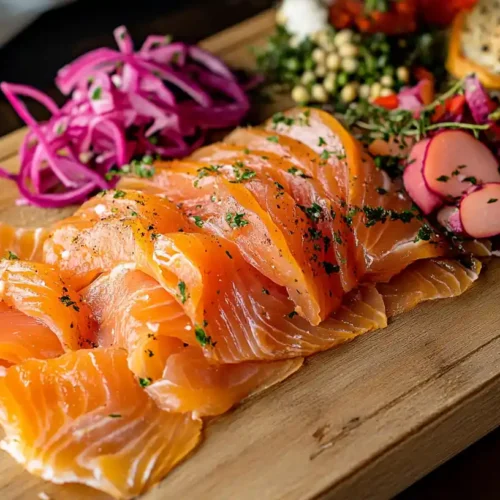
cold smoked salmon
Ingredients
- Fresh salmon King, Sockeye, Coho, or Atlantic
- Kosher salt
- Brown sugar
- Black peppercorns optional
- Dill optional
- Lemon zest optional
- Water for wet brine
Instructions
- Clean the salmon by removing scales, pin bones, and trimming dark edges.
- Choose a curing method: wet brine or dry cure.
- For wet brine, mix water, kosher salt, brown sugar, and optional spices. Soak the salmon for 12 hours in the refrigerator.
- For dry cure, mix salt, sugar, and optional spices. Rub the mixture onto the salmon, cover, and cure for 12–24 hours in the refrigerator.
- Rinse the cured salmon under cold water and pat it dry with paper towels.
- Place the salmon on a wire rack in the refrigerator for 2–4 hours to develop a pellicle.
- Prepare the smoker by soaking wood chips (alder or apple) in water for 30 minutes.
- Set up the smoker to maintain a temperature of 65–85°F (18–29°C).
- Place the salmon skin-side down on the smoker rack.
- Smoke the salmon for 12–48 hours, checking every 4 hours.
- Monitor the temperature and replace wood chips every 2–3 hours for consistent smoke.
- Check for doneness when the salmon loses 15–20% of its original weight and has a firm texture.
- Let the smoked salmon rest at room temperature for 1–2 hours before storing.
- Store the smoked salmon in vacuum-sealed bags or airtight containers in the refrigerator for up to 2 weeks or freeze for up to 3 months.
- Slice thinly and serve with bagels, salads, or as an appetizer.
